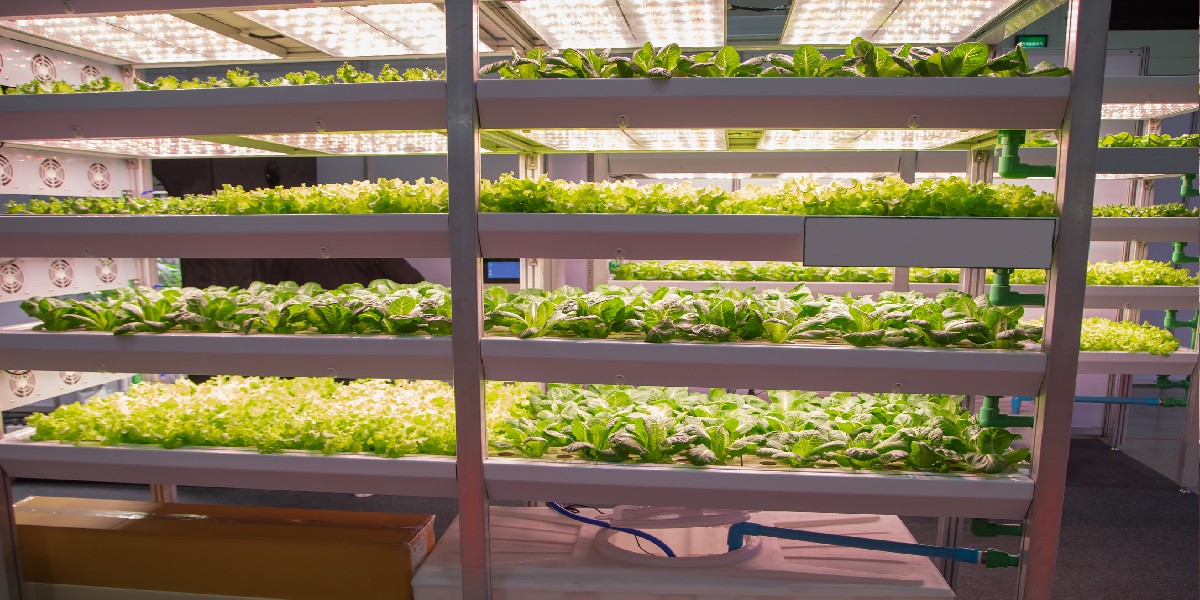Plants grown in a growth chamber under controlled conditions, called grow rooms may be the sustainable solution to feed our growing population. Traditional farming relies on large amounts of land and the correct exposure to rain and sunlight. With a growing population, and a limited amount of available land traditional framing does not provide a promising future. As the population grows, farmers and foodservice providers can look towards vertical farming and grow rooms to provide a sustainable solution. This blog serves as a guide to using grow rooms and vertical farming, its benefits, and how KPS Global capabilities can help create a vertical farming solution.
What is Vertical Farming?
Vertical farms are a type of indoor agriculture production that can be placed inside any grow room. Vertical farming grows produce in an controlled environment. By using insulated panels to control various conditions with LED lighting, temperature, and water. As a side benefit, the need for pesticides is eliminated as crops are grown in a controlled environment. Vertical farming can be done using three different growing systems: hydroponics, aquaponics, and aeroponics.
How is Vertical Farming More Sustainable?
Vertical farming is more sustainable than traditional farming. The growing process of vertical farming allows for the same yield of crops, while using far less land and natural resources. According to recent studies, vertical farming on average produces 240 times more crops while using 99% less land and 95% less water. Additionally, vertical farms can be created from repurposed warehouses and old buildings which reduces the need to occupy more land. Furthermore, water consumption is reduce as water can be recycled and reused within this contained environment. Vertical farming can also reduce the co2 admissions from the transportation of produce. Because vertical farms are not bound by location they can be placed in high populated areas and cities that typically do not have access to local fresh produce. Which creates a shorter transportation route for produce.
What Are The Benefits of Grow Rooms?
Vertical farming is a beneficial solution that can help the environment and the entire food supply chain. First, vertical farming can provide more access to local fresh fruit and vegetables in highly populated areas. Which cuts down the costs of produce and co2 emissions as described earlier. Second, since vertical farming is in a controlled environment there is no “bad seasons” as production can be accurately estimated and produced. Vertical farming provides benefits for the entire food chain from farmers to grocers to the environment. This agricultural process provides a long-term solution that is more cost effective and protects our environment.
Create a Vertical Farm Solution With KPSG
Whether you want to repurpose an existing building or create a completely new enclosure, KPSG can provide panels for grow rooms for vertical farming. At KPS Global, we are experts in panel system enclosures. We know how to control temperature conditions and have been providing grow room panels chamber for 50 years. Our panels are UL certified and provide thermal protection from heat generated from growing conditions. Additionally, we also provide a sustainable solution to traditional panels, our patented FUSIONFRAME® replaces traditional framing and provides an environmentally friendly alternative. With in-house design and engineering team we can work to provide a more sustainable panel solution to meet specific grow room and vertical farming needs.
For more information about our panel solutions, visit our website to learn more about our offerings or fill out a contact form to get answers to any vertical farming grow room panel questions you have.



